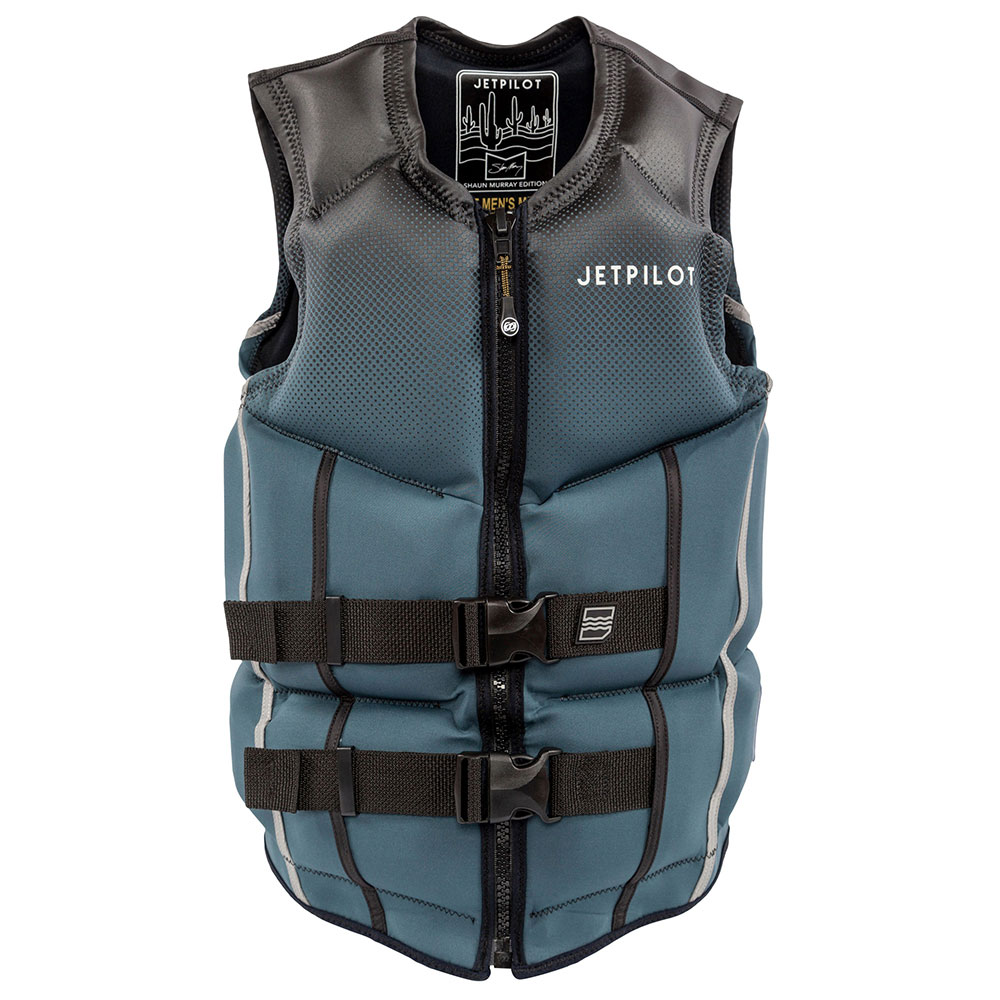By Payam Shafinia
Marketing Coordinator, After Sales
Yamaha Motor Canada
Marketing Coordinator, After Sales
Yamaha Motor Canada
In Canada, you are required to have a lifejacket or Personal Floatation Device (PFD) on board for every person on the watercraft, whether it’s motorized or not. We’ve put together a few facts to help you better understand this vital piece of boating gear.
PFD or Lifejacket?
Many people use the terms interchangeably, but not all PFDs are lifejackets. The most obvious difference between lifejackets and PFDs will be the colour. All lifejackets must be either yellow, red or orange, with a reflective strip to help increase visibility at night. PFDs can be any colour so boaters can choose one to fit their preference, while hunters and anglers can opt for camouflage.
“Lifejacket” also implies a certain level of protection and performance not found in some PFDs. Lifejackets must roll the wearer on their back as quickly as possible whether they are conscious or not, keeping the airway above the waterline.
PFDs allow for greater mobility, making them ideal for watersports, personal watercraft, canoeing and paddleboarding. However, the added mobility does impact performance. A PFD does not offer the same level of buoyancy, nor can it roll the wearer on their back as quickly as a lifejacket.
Inflatables
Inflatable PFDs are usually available as a vest or a pouch, which is worn similar to a fanny pack. Inflatable PFDs are quite popular as they are more comfortable, offer greater mobility, and better breathability when not inflated.
Inflatable PFDs have a CO2 cartridge-driven system activated either automatically when submerged or by a manual toggle system. Canadian-approved inflatables must have an oral inflation system as a backup in case the CO2 cartridge-driven system fails. Unfortunately, if the automatic system does fail and the wearer is rendered unconscious or falls into very rough water, the manual or oral inflation system may not be a viable back up. Keep in mind that inflatables must be worn when the wearer is in an open boat or above deck.
Due to their performance limitations and inflation systems, inflatable PFDs are not approved for use by anyone:
- Under 36.6 kg (80 lbs)
- Under 16 years of age
- Operating a paddle vessel in white water conditions
- On board a personal watercraft
Standards of Approval
Whether you chose a lifejacket, PFD or inflatable PFD, your floatation device must meet Canadian approval standards. Look for a label that indicates approval by at least one of the following organizations:
- Transport Canada
- Canadian Coast Guard
- Fisheries and Oceans Canada
Other Considerations
When selecting a PFD, there are some other important points to keep in mind.
- Does your activity of choice require any specific features? Anglers and hunters may prioritize camouflage, while canoers, wakeboarders, and white-water kayakers may focus on an option with good range of motion for the upper body.
- Does the PFD have provisions for a pea-less whistle?
- Bright colours and reflective material above the waterline are easier to spot.
- PFDs with three belts are best, but they can restrict mobility when participating in some activities.
Most importantly, always ensure your PFD fits you perfectly. Look for a snug fit at the shoulder, with no more than a two-finger width of space. Always tighten all belts, clasps and zippers. Remember, in a lifesaving scenario, others may grab you by the PFD and you don’t want to slip out of it.
Care and Maintenance
Your floatation device should be treated with the same care as any other lifesaving device – just like a helmet or an airbag, you never need one until you truly need one. Follow these simple tips to ensure your PFD is always ready to do its job:
- Inspect all clasps, buckles, zippers and stitching; replace the PFD if any of these points appear compromised.
- Test all straps with a hearty tug; old plastic buckles and straps can fail if someone grabs you by your PFD.
- Test for buoyancy regularly by kneeling in shallow water.
- Avoid heat sources like campfires and dryers.
- Clean with a mild detergent and water only.
- Air dry before storage.
- Never use your PFD as a seat or bumper; this can compress the inner material, compromising buoyancy.
There are many factors to consider when choosing a floatation device. Take the time to pick the best PFD for your activity, and ensure you inspect and care for all your safety gear regularly. Finally, remember, the best PFD in the world is of no use to you unless you’re wearing it when you need it.


 All Yamaha News
All Yamaha News